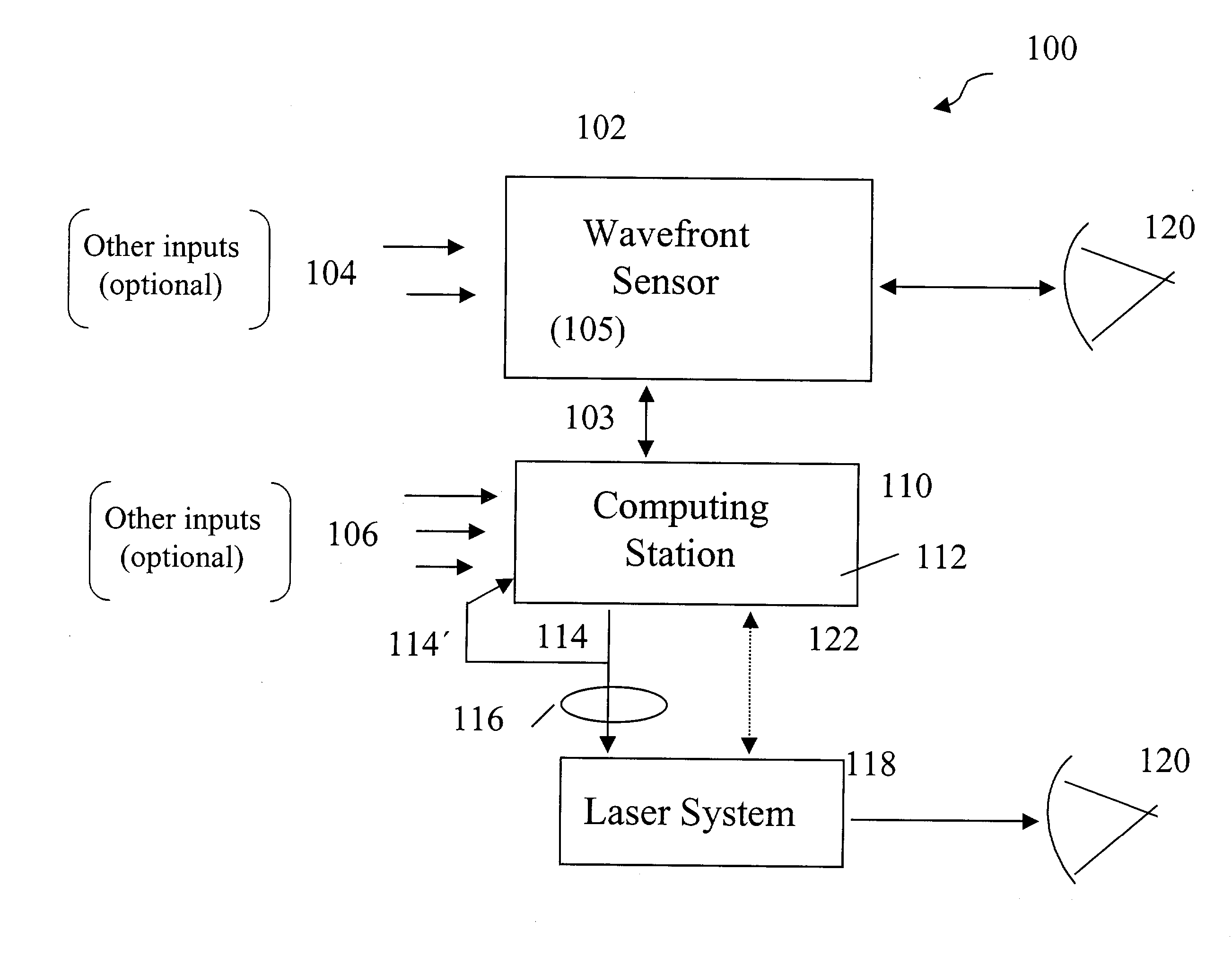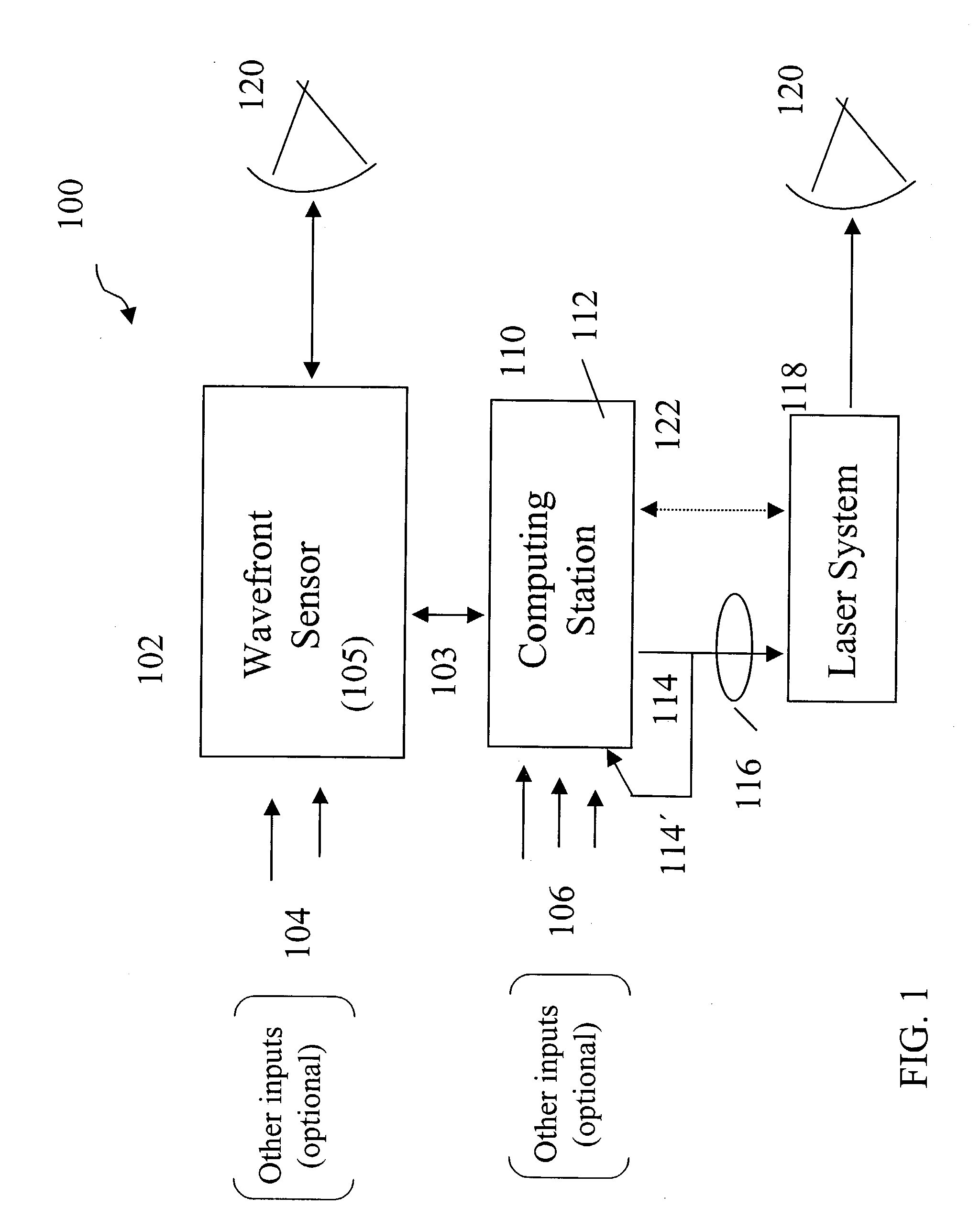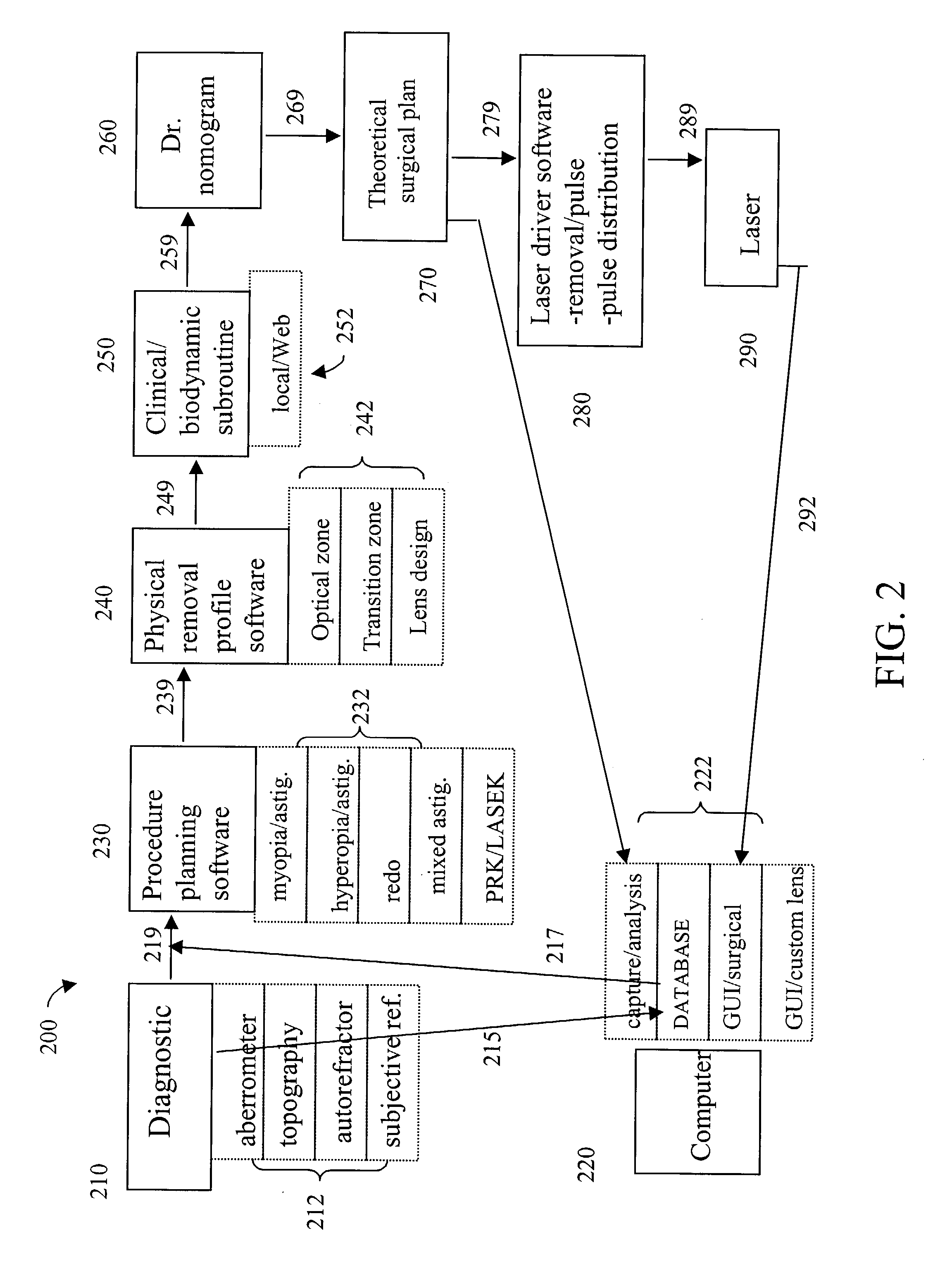System and method for predictive ophthalmic correction
- Summary
- Abstract
- Description
- Claims
- Application Information
AI Technical Summary
Benefits of technology
Problems solved by technology
Method used
Image
Examples
Embodiment Construction
[0043] FIG. 1 illustrates a system 100 for providing a predictive outcome instruction for a proposed therapeutic ophthalmic correction. The outcome is effected preferably by a customized LASIK treatment to correct lower-order and higher-order aberrations that cause vision defects in the patient's eye 120, or a custom retreatment for a decentered ablation, for example. However, it is to be appreciated that the capture, feedback, and analysis of data does not restrict the invention merely to LASIK; rather, the strategy and implementation of the invention will apply to PRK and LASEK, for example, as well as to the design and performance of custom ophthalmic optics including contact lenses, IOL's, inlays, and onlays. A collecting and transmitting station 102 is shown in the form of a wavefront sensor. The wavefront sensor 102 measures the preoperative optical aberrations of the patient's eye 120, preferably up to the fifth, and in some cases the seventh, Zernike order, or equivalent. An...
PUM
 Login to View More
Login to View More Abstract
Description
Claims
Application Information
 Login to View More
Login to View More - R&D
- Intellectual Property
- Life Sciences
- Materials
- Tech Scout
- Unparalleled Data Quality
- Higher Quality Content
- 60% Fewer Hallucinations
Browse by: Latest US Patents, China's latest patents, Technical Efficacy Thesaurus, Application Domain, Technology Topic, Popular Technical Reports.
© 2025 PatSnap. All rights reserved.Legal|Privacy policy|Modern Slavery Act Transparency Statement|Sitemap|About US| Contact US: help@patsnap.com



